Welcome to the definitive hub for fruit wines on MakeWineLab. This is where beginners find their first, foolproof recipe and experienced makers discover new combinations to refine their craft. Below you’ll get a quick way to choose your next batch, a universal template to nail the ratios, yeast and nutrient advice that actually prevents stuck ferments, and a seasonal roadmap so you’re brewing fruit at its peak. Bookmark this page—every recipe links back here as your basecamp.
How to use this hub: Pick a fruit from the sections below. Open the recipe, follow the step‑by‑step method, and keep two tabs handy: the Fermentation hub for technique and the Equipment hub to double‑check tools and measurements.
Quick Picker: Which Fruit Should You Make Next?
- Beginner‑friendly & fast aging: Strawberry, Blueberry—clean flavours, forgiving ferments.
- Bright & floral: Dandelion, Hibiscus—lifted aromas and crisp finishes.
- Tropical & aromatic: Mango, Banana, Pineapple—watch nutrients and temperature.
- Classic orchard profile: Apple, Plum (Umeshu style), Peach—balanced acidity and easy drinking.
- Summer crowd‑pleasers: Watermelon and mixed berries—serve chilled.
- For tinkerers (acidity/tannin tweaks): Pomegranate, Gooseberry—structure and zip.
Editor’s Picks: 10 Can’t‑Miss Fruit Wines
- Strawberry Wine — Juicy, crowd‑pleasing, and clears relatively fast. Great first project.
- Blueberry Wine — Deep colour, blueberry compote aromatics; ages beautifully with a touch of oak.
- Apple Wine — Crisp, off‑dry styles shine; keep SO₂ in check to preserve freshness.
- Japanese Plum (Umeshu) — Honeyed stone‑fruit notes; try different sugars (rock sugar/honey) for nuance.
- Dandelion Wine — Floral and nostalgic; meticulous sanitation and gentle racking are rewarded.
- Mango Wine — Lush tropical aroma; nutrients and temperature control are essential.
- Peach Wine — Delicate ester profile; avoid oxidation, consider antioxidant additions at rackings.
- Watermelon Wine — Refreshing summer sipper; backsweeten slightly post‑stabilisation for balance.
- Hibiscus Wine — Vivid colour and tart lift; combine with berries for complexity.
- Pomegranate Wine — Ruby colour, bright acidity; gentle tannin helps structure.
Universal Fruit Wine Template (1 US Gallon / ~4–5 L)
Use this baseline then adapt per recipe:
- Fruit: 1.5–2.5 kg, crushed or juiced; pectic enzyme helps extraction and clearing.
- Sugar: target OG ~1.085–1.095 for ~11–13% ABV. Measure with a hydrometer.
- Acid: aim pH ~3.2–3.6; adjust with acid blend or citrus. Taste is your compass.
- Tannin: 0.25–0.5 tsp for low‑tannin fruits; tea tinctures can be a gentle alternative.
- Yeast nutrients: Follow label; staggered nutrient additions prevent sluggish ferments.
- Yeast: Clean workhorse (EC‑1118) or fruit‑forward strains if aroma is priority.
Process: Meticulous sanitation → primary 5–10 days with daily cap management → rack to carboy → secondary several weeks → stabilise → bottle → age 3–6 months (tannic fruits often longer).
Sugar, Acid & Tannin: Getting the Balance Right
Sugar: Calibrate with a hydrometer. If OG is low, dissolve sugar in a small portion of must and add gradually (step‑feeding avoids yeast stress). If OG is too high, dilute with treated water.
Acid: Fruit wines come alive with the right acidity. Start with pH, but let taste guide you—zippy but not harsh. Post‑fermentation, small acid adjustments can rescue a flat wine.
Tannin: Adds grip and age‑worthiness. Use sparingly; over‑tannin shows as astringency. Oak cubes or tea can add complexity without harshness.
Matching Yeast to Fruit
- Berries (strawberry/blueberry/blackberry): Neutral yeasts keep fruit clean; estery strains add jammy notes.
- Orchard (apple/pear/peach): Fresh‑estery strains; limit oxygen and rack gently.
- Tropical (mango/banana/pineapple): Watch nutrients and temps; consider yeast that tolerates higher fructose and produces tropical esters.
- High‑acid (pomegranate/gooseberry): Yeasts with good stress tolerance; gentle tannin addition helps length.
Whatever you choose, manage temperature and oxygen to let yeast perform at its best.
Equipment & Setup
You don’t need a lab—just reliable basics. Primary fermenter (food‑grade bucket), carboy for secondary, airlock, siphon, hydrometer, sanitizer, and bottles/corks. See the full Equipment guide for sizes, tips, and maintenance.
Fermentation Management
Primary: Stir/punch daily to submerge fruit and release CO₂. Keep temperature in range (18–22 °C for most). Monitor SG every few days.
Secondary: Transfer off the pulp when vigorous activity subsides. Reduce headspace, fit an airlock, and allow time—clarity improves with patience.
Signs of trouble: Slow bubbles, sulfur smells, or no SG movement. See the troubleshooting section below and the detailed guide on restarting a stuck ferment.
Stabilising & Backsweetening
When SG is stable and dry, rack off lees and stabilise (Campden + sorbate) before any backsweetening. Start small, taste, and stop when fruit character pops without turning the wine cloying.
Aging & Storage
Most fruit wines are lovely at 3–6 months; some gain polish up to a year. Store bottles cool and dark. If using natural corks, keep them horizontal. Log tasting notes so you can adjust future batches.
Seasonality & Planning
Spring: dandelion, hibiscus. Summer: strawberry, blueberry, watermelon, mango. Autumn: apple, plum, pomegranate. Winter: spiced and mulled variations for gatherings.
Align your brewing calendar with local harvests for better price, freshness, and aroma.
Sanitation & Safety
Flawless sanitation is the cheapest flavour upgrade. Clean immediately after use; use no‑rinse sanitizer before contact; limit oxygen at transfers; and measure sulfite additions if you store wines for months.
Troubleshooting & Pro Tips
- Stuck fermentation: Raise temp slightly, add nutrients, or pitch a healthy starter—then follow our restart guide.
- Persistent haze: Give it time, rack again, consider finings; review clarification methods.
- Oxidation risk: Avoid splashing, use topped‑up vessels, and mind SO₂ levels.
- Flat flavour: Small acid bump or a touch of backsweetening after stabilising can transform a dull wine.
Category Overviews
Berry Wines
Berries deliver colour, aroma, and approachable acidity. Strawberry tends to ferment clean and clear with patience; blueberry benefits from a modest tannin boost and occasionally a tiny oak cube for depth. Blackberry and cranberry can run tart—adjust acid post‑fermentation if the wine feels sharp. Rack gently to preserve colour and minimise oxygen.
Citrus & Pomegranate
Orange and blood orange bring zest oils and bitterness if over‑extracted. Zest lightly and avoid pith; strain carefully. Pomegranate offers brilliant colour and high natural acidity—use a steady ferment and consider a short micro‑oxygenation via careful rackings to soften edges over time.
Stone & Orchard
Apple, pear, peach and plum reward balance. Keep oxygen at bay to preserve esters; sulphite appropriately after racking. Plum (umeshu style) is more of a liqueur‑like infusion—sweetness is part of the charm; log your sugar additions for repeatability. Peach and pear show best slightly off‑dry.
Tropical
Mango, banana and pineapple offer powerful aromatics but can challenge yeast with nutrient demands. Use staggered nutrient additions and tight temperature control. Clarification may take longer; patience plus pectic enzyme help achieve brilliant results.
Flowers & Herbs
Dandelion and hibiscus rely on careful sanitation and gentle extraction. Avoid boiling flowers; steep instead to retain delicate notes. Elderflower “champagne” is lightly sparkling—serve young and cold. Herbal additions can overwhelm; start small and scale up next batch.
Unique & Seasonal
Fun projects like watermelon, rhubarb, or blends (strawberry–rhubarb) keep creativity high. Many of these shine when backsweetened just enough to highlight fruit. Serve well‑chilled for maximum aromatics and freshness.
Beginner Path (Your First 30 Days)
- Read the Master Guide and assemble the basics from the Equipment hub.
- Pick an easy fruit (strawberry or blueberry). Weigh fruit, check OG and pH, and start primary.
- Manage cap daily, take notes, and rack to secondary when vigorous activity slows.
- After clearing, stabilise and bottle. Label and store cool. Open a bottle at 6–8 weeks to learn, then again at 3 months.
Common Mistakes (and Quick Fixes)
- Under‑sanitising: Off‑flavours appear fast—clean immediately after use and sanitise before contact.
- Chasing ABV: Very high OG stresses yeast; aim for flavour, not maximum alcohol.
- Oxygen splashing during transfers: Causes browning and stale notes—siphon gently and top up vessels.
- Skipping nutrients: Leads to sluggish ferments—use a balanced nutrient plan.
Practical Flavour Adjustments
- Too tart: backsweeten slightly after stabilising; tiny acid reduction can help.
- Too flat: add a touch of acid blend; sometimes a cooler serving temp restores brightness.
- Lacking body: consider light tannin or a brief oak cube contact; don’t overdo it.
Glossary (Fast Reference)
- OG/FG: Original/Final gravity—hydrometer readings that estimate ABV.
- Racking: Siphoning wine off sediment into a clean vessel.
- Lees: Yeast sediment; early rackings remove gross lees to avoid off‑flavours.
- Stabilise: Adding sulphite and sorbate to prevent renewed fermentation after sweetening.
FAQs
- What's the easiest fruit wine for beginners? → Strawberry or blueberry.
- How long should fruit wine age? → Most are great after 3–6 months; some benefit up to 12 months.
- Can I blend fruits? → Yes—strawberry–rhubarb, mixed berries, or orchard blends add complexity.
- Do I need pectic enzyme? → It improves extraction and clearing; follow each recipe’s guidance.
Browse by Category
Berry Wines

Blueberry Wine: A DIY Guide for Delicious Summer Drinks!

Wine Not? Learn How To Make Your Own Cranberry Wine In Just 5 Easy Steps
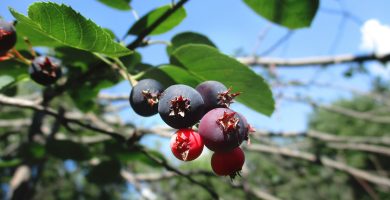
How to Impress Your Guests with a Simple Saskatoon Berry Wine Recipe

Homemade Strawberry Wine Recipe: A Step-by-Step Guide

Blackberry Wine – Fresh From the Vineyard
Citrus & Pomegranate

Pomegranate Mulled Wine: The Ultimate Guide by Mark Standford

Wine from Pomegranate: The Ruby-red Elixir
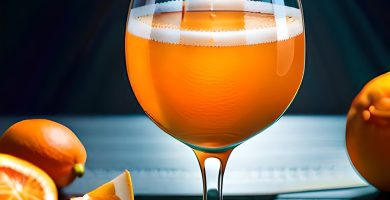
Wine from the Orange: Exploring the World of Orange Wines

Unleash the Flavor: Blood Orange Wine with Grape Starter Recipe
Stone & Orchard

The Ultimate Guide to Japanese Plum Wine: Discovering Umeshu

The Ultimate Guide to Making Crabapple Wine at Home

Making Zinfandel Wine: Recipe and Cooking Ideas You Will Love!

Japanese Plum Wine: A Step-by-Step Guide to Crafting Your Own Delicious Beverage
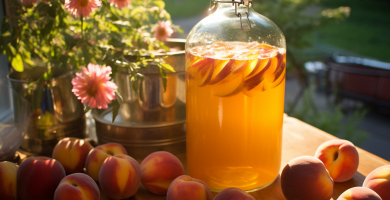
Peach Wine, The Secret Golden Taste

Gooseberry Wine in 11 Steps at Home

Pineapple Wine Recipe – The Golden Pleasure

An Apple Wine Recipe That Suits Your Personal Taste
Tropical
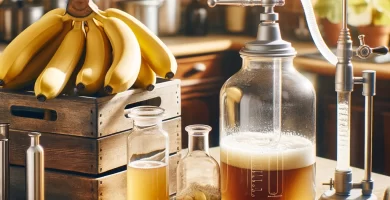
Banana Wine: The Tropical Beverage Revolutionizing the Wine World

Mango Wine: A Deliciously Sweet and Fruity Homemade Wine Recipe
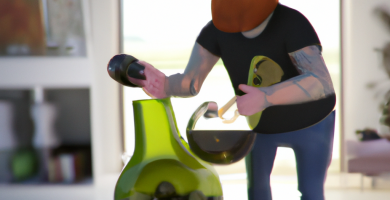
Homemade Kiwi Wine – Easy and Delicious Recipe: Perfect for Wine Lovers!

Watermelon Wine – The Exotic Taste

Pineapple Wine Recipe – The Golden Pleasure
Flowers & Herbs
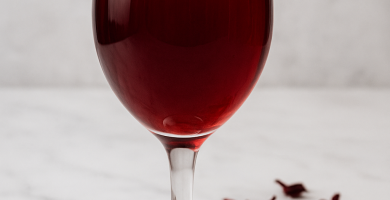
Hibiscus Wine Recipe (Roselle/Sorrel) — Deep Red, Bright & Floral

The Ultimate Sunflower Wine Recipe with Petals: A Delightful Floral Elixir
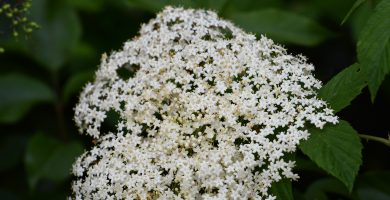
Elderflower Champagne: A Refreshing Summer Beverage

Dandelion Wine: A Step-by-Step Guide to Making Your Own Delicious Dandelion Wine at Home
Unique & Seasonal

Rhubarb Wine Recipe: A Homemade Wine to Surprise

Strawberry Rhubarb Wine: A Review

Dragon Blood Wine

Frankenberry Wine Recipe
Next: Learn the fermentation science and check our equipment list. Then choose your fruit above.
